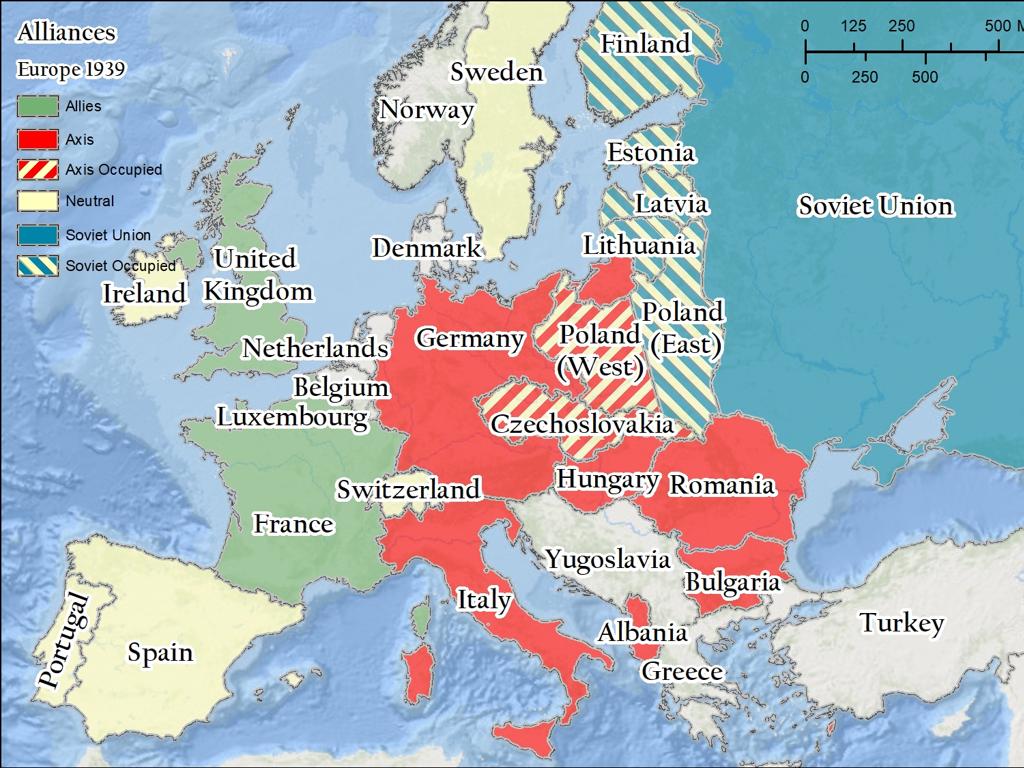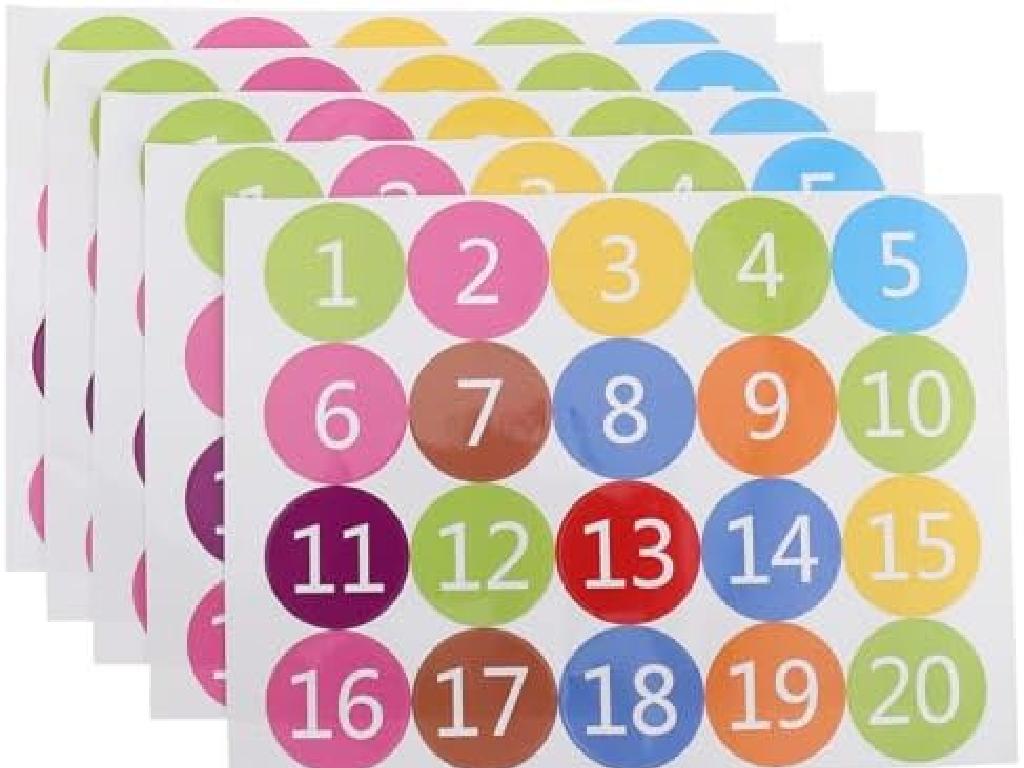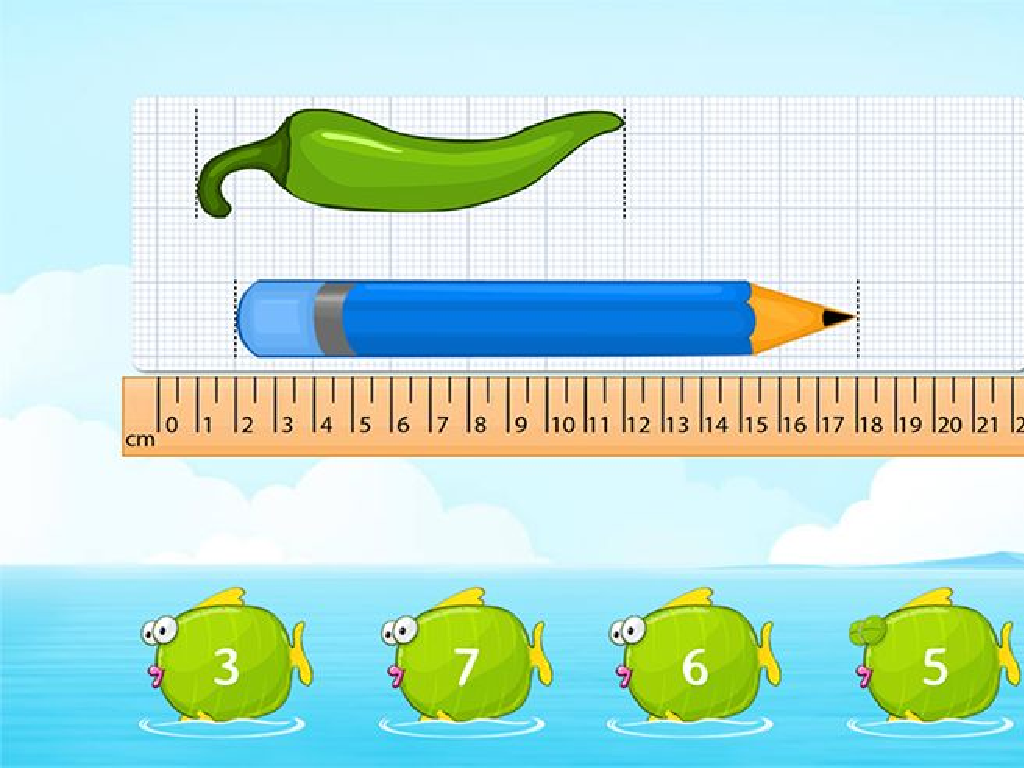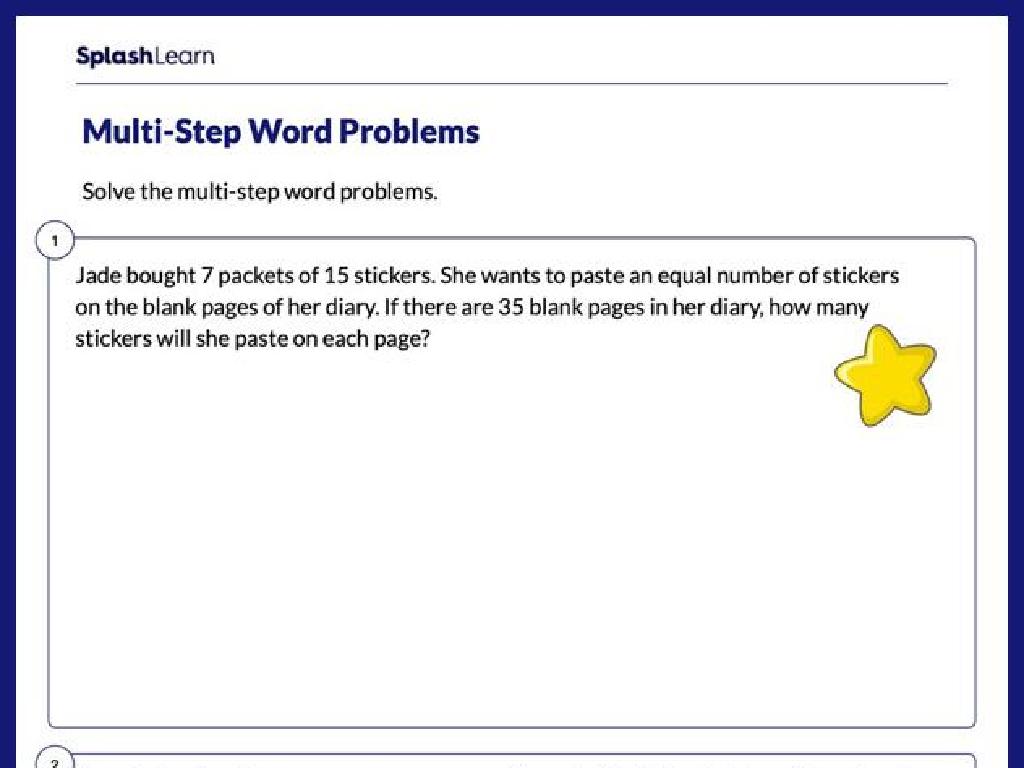Multiply Fractions By Whole Numbers I
Subject: Math
Grade: Sixth grade
Topic: Multiply Fractions
Please LOG IN to download the presentation. Access is available to registered users only.
View More Content
Multiplying Fractions by Whole Numbers
– Recap: What is a fraction?
– A fraction represents a part of a whole, like 1/2 of a pizza
– Understanding multiplication
– Multiplication means repeated addition. For example, 3 x 4 is like adding 4 three times
– Today’s goal: Multiply fractions by whole numbers
– We’ll learn how to multiply a fraction by a whole number, such as 1/2 x 3
– Visualizing fraction multiplication
– Imagine splitting something into equal parts and then taking some of those parts multiple times
|
Begin with a brief review of fractions to ensure students recall that a fraction represents a part of a whole. Clarify the concept of multiplication as repeated addition, which will help them understand multiplying fractions by whole numbers. The goal for today’s lesson is to learn and practice this skill. Use visual aids like fraction circles or bars to help students visualize the process of multiplying fractions by whole numbers. Encourage students to think of real-life examples where they might use this skill, such as in cooking or dividing items evenly among a group. Provide step-by-step examples and plan for interactive activities where students can practice with guidance.
Visualizing Fractions
– Visual examples of fractions
– See fractions as slices of a pie or parts of objects
– Pie charts show parts of a whole
– Each slice represents a fraction of the pie
– Group activity with objects
– Find and label fractional parts in groups
– Understanding fractions visually
|
This slide aims to help students visualize fractions using tangible examples. Begin by showing images or objects divided into equal parts, like slices of a pie, to represent fractions. Explain how pie charts can be used to depict fractions, with each slice representing a different part of the whole. For the group activity, provide various objects (e.g., strings, blocks, fruits) for students to divide and label, reinforcing the concept of fractions. Encourage students to discuss how many parts make up a whole and how each part is a fraction of that whole. This visual approach will aid in their understanding of fractions as they progress to more complex operations like multiplying fractions by whole numbers.
Multiplication as Repeated Addition
– Multiplication links to addition
– Multiplication is like adding a number to itself multiple times
– Examples: Adding fractions repeatedly
– 1/4 added 3 times is 1/4 + 1/4 + 1/4
– Discuss real-life examples
– Pizza slices or sharing candy bars can illustrate this
– Understand multiplication concept
|
This slide introduces the concept of multiplication as a form of repeated addition, which is a foundational understanding for multiplying fractions by whole numbers. Start by explaining that multiplication is essentially adding the same number several times. Provide examples with simple fractions, such as adding 1/4 three times to show how it equals 3/4, which is the same as multiplying 1/4 by 3. Engage the class by discussing real-life scenarios where they have encountered this concept, like dividing a pizza into equal slices and then taking several slices. This will help students visualize the process and relate it to their experiences. The goal is to solidify their understanding of multiplication before applying it to fractions.
Multiplying Whole Numbers by Fractions
– Understand the multiplication process
– Example: Multiplying 3 by 1/4
– 3 x 1/4 equals 3/4 or three quarters
– Practice Problem: Multiply 5 by 2/3
– Work together to solve 5 x 2/3
– Visualize with fraction models
– Use models to see the parts of a whole
|
This slide introduces the concept of multiplying whole numbers by fractions. Start by explaining the process: to multiply a whole number by a fraction, multiply the whole number by the numerator and keep the denominator the same. For example, 3 x 1/4 is simply 3 times 1, which equals 3, over the denominator 4, resulting in 3/4. Next, present a practice problem for the class to solve together, such as 5 x 2/3. Walk through the steps, multiplying 5 by 2 to get 10, and then placing that over the original denominator, 3, to get 10/3, which simplifies to 3 1/3. Encourage students to visualize the process using fraction models, which can help them understand how the whole number is distributed across the fractional parts. This visual aid is particularly helpful for students who are visual learners.
Understanding Fraction Multiplication
– Interpret whole number and fraction product
– Understand the result of multiplying a whole number by a fraction
– Apply multiplication in daily life
– Consider examples like cooking or shopping
– Recognize why products may be smaller
– Multiplying by a fraction often means taking a part of a whole
– Explore real-world examples
|
This slide aims to deepen students’ understanding of multiplying fractions by whole numbers. Begin by interpreting the product of a whole number and a fraction, ensuring students can visualize what the mathematical operation represents. Discuss real-world applications, such as dividing a pizza into slices or measuring ingredients for a recipe, to illustrate the concept. Highlight why the product is smaller when multiplying by a fraction, explaining that the operation is akin to taking a part of a whole, which is a fundamental concept in understanding fractions. Encourage students to think of other everyday scenarios where they might use fraction multiplication and share their ideas with the class.
Practice Time: Multiplying Fractions
– Complete the worksheet individually
– Pair up and compare solutions
– Share your methods and learn from each other
– Discuss solving strategies
– Explain how you approached the problems
– Class review and doubt clarification
– We’ll go over the answers together and answer any questions
|
This slide is designed to facilitate active learning through practice and collaboration. Students will begin by individually completing a worksheet that contains problems on multiplying fractions by whole numbers. Afterward, they will pair up with a classmate to compare their answers and discuss the different methods they used to solve the problems. This peer interaction encourages students to articulate their thought processes and can lead to deeper understanding. Finally, the class will come together to review the answers. During this time, the teacher should address any misconceptions and provide further explanations to ensure all students are clear on the concepts. Possible activities for different pairs could include creating their own problems, using visual aids to explain their methods, or even teaching the concept to the class as if they were the teacher.
Class Activity: Fraction Multiplication Art
– Create art with fraction multiplication
– Each student designs a unique pattern
– Multiply fractions for your design
For example, use 1/2 x 4 to create a pattern with 2 equal parts.
– Share art and explain your fractions
|
This activity combines creativity with math skills, allowing students to apply their knowledge of multiplying fractions by whole numbers in a fun and engaging way. Provide students with grid paper and have them design a pattern by repeating a shape or a series of shapes that represent a fraction multiplied by a whole number. Encourage them to use different fractions for different parts of their design to create variety. Once completed, students will share their artwork with the class and explain the fractions they used and how they multiplied them to achieve their final design. This will reinforce their understanding and give them practice in explaining mathematical concepts. Possible variations include using different shapes, colors, or even creating a collaborative mural where each student’s piece contributes to a larger image.
Wrapping Up: Fractions & Homework
– Review of multiplying fractions
– Homework: 10 problem worksheet
– Solve the given problems to reinforce today’s lesson
– Next lesson: Fractions by fractions
– We’ll explore how to multiply two fractions together
– Keep practicing for mastery
|
As we conclude today’s lesson on multiplying fractions by whole numbers, provide a brief recap, emphasizing the key steps they’ve learned. Assign a practice worksheet with 10 problems as homework to solidify their understanding. In the next class, we will advance to multiplying fractions by fractions. Encourage students to practice today’s concept to prepare for the complexity of the next lesson. The homework will also serve as a good indicator of their grasp on the topic, so review the completed worksheets at the beginning of the next class to address any common issues.





